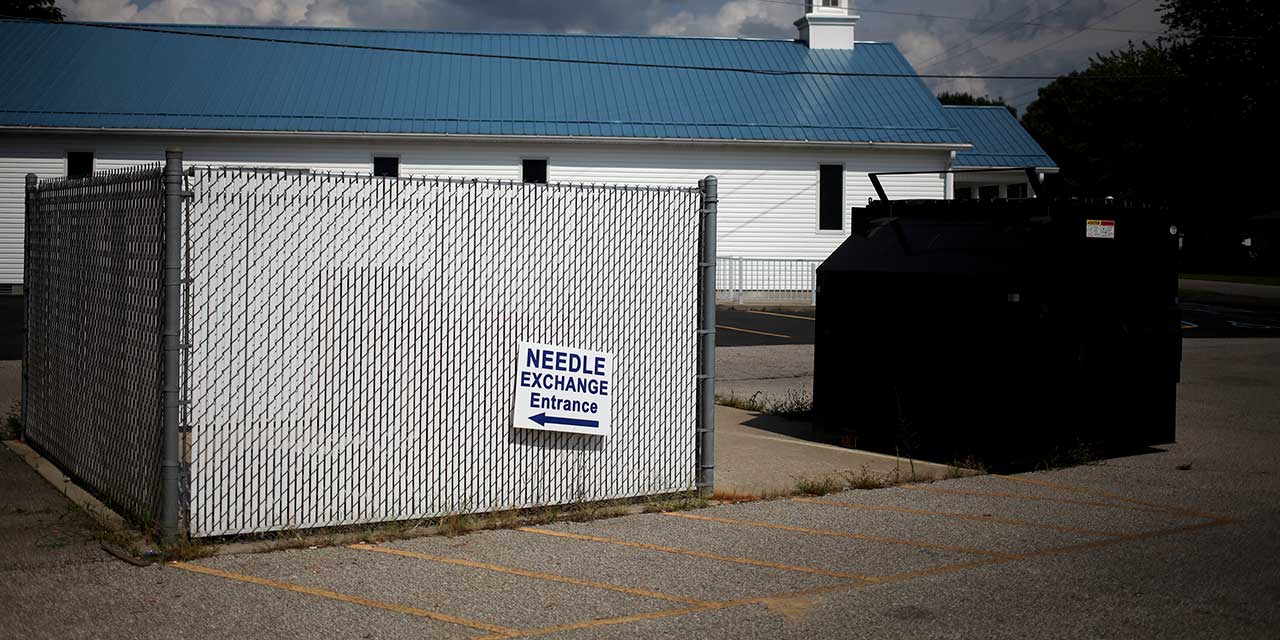
Image via City Journal
Small town Austin, Indiana in Scott County made national headlines last year when it had 203 newly contracted cases of HIV in only about a year and half. This was caused by needle sharing from addicts injecting the prescription drug Opana. Scott County became one of the symbols of working class malaise during the election.
I have a major feature article on Scott County in a special issue of City Journal. It explores Scott County’s history and problems, and more importantly, what they’ve been doing about it with some success.
Dr. Jerome Adams, whom I interviewed for the piece and is quoted several times, was recently nominated by President Trump to be Surgeon General. I was very impressed with Dr. Adams when I met him.
Here’s a sample from the article:
Taken together, the employment crisis and the social dysfunction produce a sense of malaise in some places. People almost always wave, smile, and say hello in small-town Indiana; but in Austin, for instance, only one person I saw even acknowledged my presence while I drove around. The rest just shambled about with blank stares. One local assured me that had my wife not been with me in the car, prostitutes would surely have approached me, soliciting for money to buy drugs. Scottsburg looks much better, with a healthy business district centered on its interstate interchange, but it, too, has troubles, such as significant retail-storefront vacancy on its courthouse square.
The difficulties of communities like Scott are all the more striking, considering the region’s economic strengths. Scott is part of the federally defined Louisville metro area. The inclusion of rural areas within metro regions is not unusual. America’s metro areas are defined by commuting patterns, and they include large rural zones. To say that America is a metropolitan nation—86 percent of the country lives in metro areas—doesn’t mean that it all looks like Chicago or New York. Most of the metropolitan population is in suburban and even rural areas, and many rural areas, like Scott, are within easy commuting distance of a city. In Scott’s case, that city is the center of a bustling regional economy that is home to major corporations like Brown-Forman, Humana, and Yum! Foods (parent company of Kentucky Fried Chicken, Pizza Hut, and Taco Bell). In the last five years, the Louisville metro area added 75,300 jobs—a growth rate of 12.9 percent. Manufacturing grew 31.6 percent, adding 19,600 jobs. Ford maintains a major auto-assembly plant there, and General Electric still manufactures appliances in the city. Louisville is also the site of UPS’s primary global air hub. The shipping firm employs more than 20,000 people and supports a major distribution infrastructure.
…
Beyond fighting back against drugs and HIV, Scott County has also made a good start on retraining workers to help them find jobs and offering inducements to attract employers. The main effort on both counts is Scottsburg’s new $10 million Mid-America Science Park, financed half from stimulus funds and half from reserves in the local Tax Increment Financing district. Despite its own serious troubles, the county generously delayed the science park’s planned 2012 opening so that it could be used as a temporary high school after a tornado destroyed nearby (Clark County) Henryville’s building. Today the science park hosts training facilities for workers and high school students. IvyTech, Indiana’s community-college system, has opened a campus there.
Some training is employer-specific. For example, Jeffboat in nearby Jeffersonville, America’s largest inland shipbuilder, donated a special welding training machine to help people learn how to perform the extra-thick welds needed on the barges that it constructs. The science park’s goal is to become, in effect, an outsourced training department for employers—albeit one they don’t have to pay for. Mayor Graham tells local companies: “My goal is that if you need any training done, I’ll do it. You won’t have to do it.” This wouldn’t just be for new hires. “It’s also for our incumbent workers,” Graham says. “If they need to get their skills upgraded—and they do—they can come here and take some training.”
Click through to read the whole thing. Even if you’ve read about Scott County before, this piece has a lot you haven’t already read elsewhere. It’s an important read for anyone working in or with similar struggling communities.
from Aaron M. Renn
http://www.urbanophile.com/2017/07/13/trouble-in-trump-county-usa/
No comments:
Post a Comment